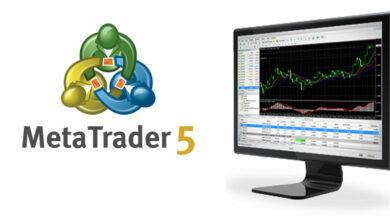CryptocurrencyFinance
Understanding Business Debt: Smart Borrowing Strategies

Every business, whether small or large, faces situations where borrowing becomes necessary. Entrepreneurs often turn to loans or credit to cover expenses, expand operations, or seize new opportunities.
However, debt can either act as a stepping stone toward growth or a burden that slows progress. The intent of this article is to help you understand business debt and guide you through smart borrowing strategies that reduce risks while increasing financial stability.
The Role of Business Debt in Growth
Business debt is not always negative. When managed well, it becomes a tool that fuels expansion, funds innovation, and builds long-term success.
Smart entrepreneurs recognize that taking on debt for revenue-generating projects, such as expanding production, marketing campaigns, or upgrading equipmentcan deliver returns far greater than the borrowed amount.
Modules like Crypto 30x pro highlight how financial tools and strategies help businesses make better borrowing decisions in today’s competitive markets.At the same time, debt should never be taken lightly.
Companies that borrow without a clear repayment plan often find themselves trapped in a cycle of high interest and mounting liabilities. This is why careful planning, supported by practical strategies, is crucial when considering loans or credit.
Choosing the Right Type of Debt
Not all debt is created equal. Business owners should analyze their goals before selecting a financial product. Short-term loans, for instance, may be best for covering seasonal expenses or temporary cash flow gaps.
On the other hand, long-term loans may suit businesses that are investing in equipment, real estate, or large-scale expansion projects.Lines of credit offer flexibility, giving businesses access to funds when needed, without the burden of immediate repayment on unused credit.
Meanwhile, specialized financing like equipment loans or trade credit can reduce pressure on working capital while keeping daily operations steady. Choosing wisely helps avoid financial strain and ensures debt aligns with business objectives.
Balancing Debt and Cash Flow
The key to smart borrowing lies in balancing debt with cash flow. A business should only borrow amounts it can comfortably repay through its regular income. If monthly loan repayments consume too much of the company’s earnings, it reduces the ability to pay suppliers, employees, and other essential expenses.
Creating accurate cash flow forecasts before taking on debt is a reliable way to evaluate repayment ability. It allows business leaders to anticipate potential challenges and plan accordingly. Healthy cash flow ensures debt is not a burden but a manageable part of business operations.
Interest Rates and Borrowing Costs
Borrowing is never free. Interest rates, fees, and repayment schedules all determine the true cost of debt. Business owners should compare lenders and evaluate the total borrowing cost, not just the advertised interest rate. Even a slight difference in rates can significantly affect repayment amounts over time.
Fixed-rate loans provide stability by keeping repayment amounts predictable, while variable-rate loans may change with market conditions, offering both opportunities and risks. Understanding these details before borrowing helps businesses choose the most sustainable option.
Building Strong Creditworthiness
Lenders are more willing to provide favorable loan terms to businesses with strong credit histories. Paying existing debts on time, maintaining a healthy credit utilization ratio, and avoiding unnecessary borrowing all contribute to building creditworthiness.
Good credit history not only lowers interest rates but also opens doors to larger funding opportunities in the future. It gives businesses the confidence and flexibility to borrow when strategic opportunities arise.
Borrowing in the Age of Modern Finance
The financial landscape is evolving. Businesses now have access to traditional banks, online lenders, and alternative financing options. Beyond conventional loans, digital systems powered by advanced technologies, such as those found in modern blockchain solutions are reshaping how companies approach borrowing. These innovations provide more transparency, faster approvals, and better security in financial transactions.
This shift gives entrepreneurs greater freedom to explore funding options that match their needs. The smart borrower evaluates not just the amount and cost but also the structure and flexibility of the funding source.
Practical Strategies for Managing Debt
Smart debt management requires consistent monitoring. Setting aside emergency reserves ensures repayment even during slow business periods. Refinancing at lower interest rates can also reduce long-term costs.
Additionally, reinvesting borrowed money into activities that generate income guarantees the business benefits from debt instead of being weighed down by it.
Another important strategy is avoiding over-leverage. While it may be tempting to borrow large amounts for ambitious projects, excessive debt can harm a company’s stability. Maintaining a healthy debt-to-equity ratio keeps financial risk under control.
Conclusion
Business debt is a powerful tool when handled with discipline and foresight. Borrowing for the right reasons, selecting the right type of loan, and balancing repayments with income all contribute to long-term success. Entrepreneurs who approach debt strategically transform it from a liability into an asset that fuels growth. By adopting smart borrowing strategies, businesses safeguard their financial health while preparing for expansion opportunities. Debt, when managed wisely, is not a setback—it is a stepping stone toward stability and future growth.





